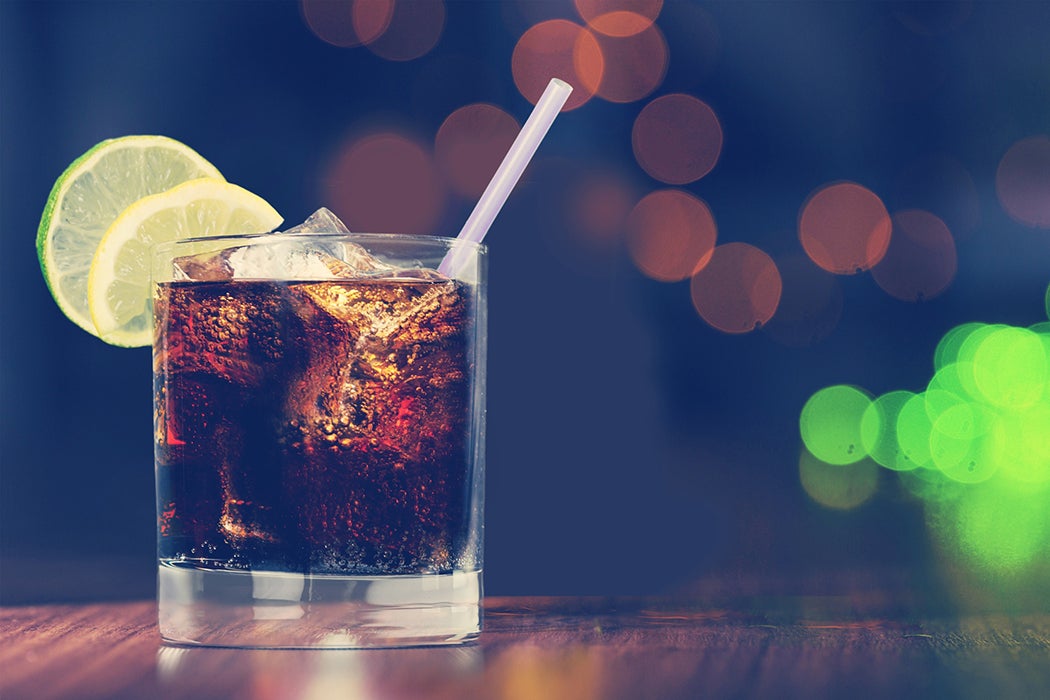Ah, the rum and Coke. What could be more obvious, or more American, than a sugary soda mixed with a liquor made from sugar? But, as Wayne Curtis writes, the origins of the cocktail’s popularity are stranger than you might expect.
Legend has it that Coca-Cola was first mixed with rum and a bit of lime in a Havana bar during the Spanish-American war, earning the alternate name the Cuba Libre. According to Curtis, it would take four decades, another war, and an odd pop song to bring it widespread popularity in the U.S.
In 1940, with German submarines threatening ships along the South American coast, Franklin Roosevelt reached a deal with Winston Churchill to build large U.S. military bases on British-controlled Caribbean islands, including Trinidad.
With them came cases and cases of Coke. Playing to a patriotic U.S. market, at the outset of the country’s entry into World War II, the Coca-Cola company promised that service members would never pay more than a nickel a bottle. It also sent technical advisers empowered to set up bottling operations wherever they went, to ensure a constant flow of the sugary drink.
The marketing campaign worked, Curtis writes: “An unusually large number of soldiers wrote home that they were fighting, among other reasons, for the right to drink Coca-Cola.” And, naturally, in a place like Trinidad with abundant, inexpensive rum, the two beverages ended up together.
The arrival of 130,000 troops on Trinidad, an island with a population of just 400,000, was unsettling for the local culture. Watching the behavior of American soldiers around Trinidadian women, the island musician Lord Invader made up new lyrics to a popular calypso song about a young woman abandoned to a life of sex work:
Since the Yankees came to Trinidad,
They have the young girls going mad,
The young girls say they treat them nice,
And they give them a better price.
They buy rum and Coca-Cola,
Go down Point Koomhana
Both mother and daughter
Workin’ for the Yankee dollar
After hearing “Rum and Coca-Cola” during a USO tour, comic musician Morey Amsterdam brought it back to the U.S. In 1944, the Andrews Sisters popularized it, using faux-Caribbean accents and making it the flip side of the ditty “One Meat Ball.” The lyrics in this version were a bit different but still featured the mother and daughter working for the Yankee dollar, as well as a line about “GI romance with native peach.”
The song was a massive hit. It spent 10 weeks at the top of the Billboard charts and became the third best-selling hit of the 1940s, after Bing Crosby’s White Christmas and Patti Page’s “Tennessee Waltz.” “The song was called the national anthem of the GI camps,” Curtis writes. “And soon rum and Coke became the de facto national drink of many of the troops.”
By 1946, popular food write Lucius Beebe identified the Cuba Libre as the iconic American drink it remains today.







